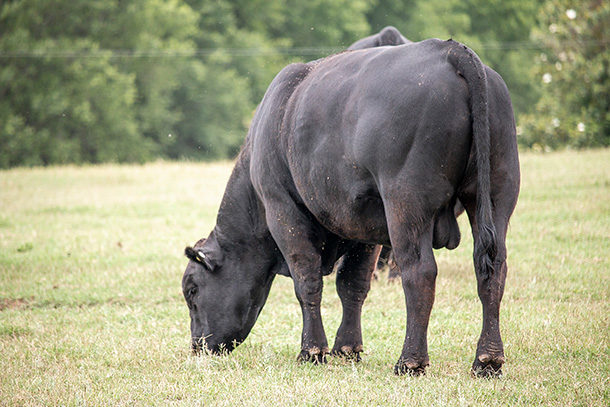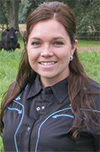Whether directly or indirectly, heat stress typically results in decreased performance in our herd.
Heat stress has a major impact on female reproduction. Science and experience have taught us that cattle do not respond well reproductively to heat. Stress from increases in body temperatures have been demonstrated to impact all major reproductive hormones that drive the conception bus in our herd. These hormones include gonadotropin-releasing hormone (GnRH), luteinizing hormone (LH) and follicle-stimulating hormone (FSH).
Reviews of heat stress on females are well documented and typically are what come to mind when we address the topic. We know if the breeding season is hot, our cows will experience less-fertile heats, are less likely to show estrus when cycling and typically have lower overall pregnancy rates.
We also know that infertility in one cow equals one open cow, but keep in mind that fertility issues in one bull equals 25 open cows! So, let’s look at what heat does to spermatogenesis and male fertility.
First, let’s set the stage: In cattle, the first thermoregulation mechanisms will start at around 57°F. Moderate heat stress will cause an increase in energy and metabolic requirements between 7% to 25% to provide energy to cool, and thyroid T3 and T4 (which regulate how the body uses energy) blood concentrations are decreased to adapt to stress. Respiration accounts for 15% of heat loss, which is why the most visible sign of heat stress in cattle is panting. By 75°F their bodies no long have adequate means to regulate body temperature, and on top of it all, this is dramatically compounded by humidity. Response to heat stress is also very dependent on age, body condition, breed and individual genetics.
When it comes to male reproduction, the ability to produce quality quantities of semen is everything. In cattle, spermatogenesis is intensely thermoregulated. A bull’s normal body temperature is 101.5°F, whereas his testicular temperature must be maintained between 94°F to 98°F for healthy spermatogenesis. This decrease in scrotal temperature is made possible, in part, by a complex vascular system known as the pampiniform complex, which carries blood away from the body and allows for countercurrent heat exchange to take place. This means it is responsible for cooling the blood before it goes into the testis and then reheats the blood as it flows back into the body. Heat stress increases testicular temperature and results in sperm abnormalities. Duration of heat stress and its intensity impact the severity of ejaculate impact. Optimum temperature for semen production is 59°F to 64°F.
In research published in 2020 in the Journal of Theriogenology by Seifi-Jamadi and peers, there was no difference in the volume of total sperm output or motility by season if bulls were not heat stressed. However, if heat stress was induced, regardless of the season, bulls had lower sperm concentrations. But the issues of heat stress did not just stop with the semen. Research showed that if successful fertilization occured with semen from a heat-stressed bull, the cleavage and blastocyst rates on day seven and eight were lower when fertilized with heat-stressed semen. What does that mean for ranchers? Overall results indicated that semen samples collected from heat-stressed bulls impacted overall embryonic health and development.
Intensity and duration of heat stress defines how bad the damage will be. Even mild, short-term heat stress can impact sperm motility for 14 to 21 days after exposure. Other research has shown that moderate-to-high heat stress can impact sperm motility for 65 to 70 days. Keeping in mind that the total process of spermatogenesis is 61 days in bulls, and depending on the timing of the heat stress event and the stage of sperm cell development, the total impact could likely reach well into 100 days.
Let’s translate this directly into production:
- Producers who are gearing up for fall calving need to keep in mind that their bulls need adequate shade and opportunity to keep cool over the summer. The heat stress they may experience in August can impact their fertility well into the winter.
- Seedstock producers should always be aware of how they are handling bulls. Heat stress on developing bulls in the summer and fall can have an impact on those bulls’ abilities to pass their semen check for sales.









